Energy Services
SMG works with clients on sustainability issues and energy conservation. We help with greenhouse gas inventories and reporting, reduction strategies and permitting. SMG has experience in site selection, land use planning, permitting, resource development and public interaction.
1/Permitting an Energy Facility
PROBLEM
A proposed energy facility needed to understand and obtain all environmental permits to operate within the law. The permitting process involved the U.S. Army Corps of Engineers, the state air, water and waste regulatory agencies, the State Historic Preservation Officer, State and U.S. Fish and Wildlife offices, local government and the state regulator for electric generation and transmission.
SMG'S APPROACH
SMG worked with the developer to outline and schedule the likely permitting actions and projected timetables. Our experience with each of the agencies allowed us to realistically estimate the real-time schedule necessary for permit review and issuance. Because of the size and schedule of the project, it was necessary to coordinate all the permits and ensure that information used in one arena was consistent with that needed for another. As permit applications were developed and finalized by SMG’s engineering and scientific staff, a hands-on management effort was put into play. This included face-to-face meetings with reviewers at critical stages in the permitting process, especially before application submittal and when responding to questions, which helped move the review process with fewer questions and roadblocks. SMG actively participated in all public comment periods, making sure that positive aspects of the project received comment.
RESULTS
The project remained on schedule. Public comments were substantially positive and the project was able to illustrate its benefit to the community and the environment. Permits have been issued with appropriate and reasonable permit conditions which will enable the facility to operate as planned. The project developer has been able to learn and incorporate the operating requirements as we have negotiated each permit.
2/Site Selection and Development
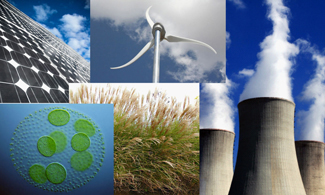
PROBLEM
A developer was interested in establishing a waste-to-energy facility in Kentucky. They needed to find a suitable site that could provide the assets their process would require and the potential feedstock needed to make the facility successful.
SMG'S APPROACH
SMG had previously conducted extensive research into property available for energy project development across Kentucky and had the expertise and understanding of the criteria necessary for a successful project. We designed a set of parameters addressing the size, availability of water, power, natural gas and transmission assets required by the facility. We then analyzed the recorded waste streams for each area to determine which potential sites would be best suited for the proposed facility. Following identification of several potential sites, SMG arranged meetings with local officials to gauge interest in the process and to outline the benefits and costs of the potential development.
RESULTS
The client identified two sites with the physical assets needed for success and with interested and cooperative local representatives. With the identification of appropriate sites and feedstock, the client’s business plan was able to move to the next level and lock in financing to allow the project to proceed.
3/Eastern Kentucky Coal Gasification Project
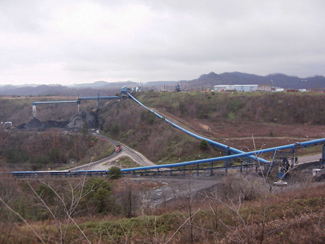
PROBLEM
Can an eastern Kentucky mine complex support a large coal-to-liquid fuel or coal-to-gas facility?
SMG'S APPROACH
SMG worked with a large energy and mineral company to determine the feasibility of developing a large CTL/CTG facility on a site in eastern Kentucky. The evaluation included a review of available technologies and potential products for coal gasification to be located on this eastern Kentucky site. A market study of the economic potential of the products helped the developer determine which technology it would pursue.
Specific studies included the adequacy of feedstock and product transportation options including rail and road, the potential issues with delivery of oversize facility components to the site, and availability of adequate electrical and natural gas transmission to the site. A plan to connect to the electric transmission grid was developed. Water availability is a critical issue for any coal gasification project and SMG studied the feasibility of utilizing subsurface water from closed underground mines in the area to supplement surface water resources. SMG also worked with site engineers to develop a preliminary site layout to confirm the feasibility of operating a large industrial facility at this property.
RESULTS
The current phase of activities includes a preliminary evaluation of emissions for permitting and supervision of preliminary engineering design for a coal to gas facility.
4/Feasibility Study—Alternative Energy Site, Northeastern KY
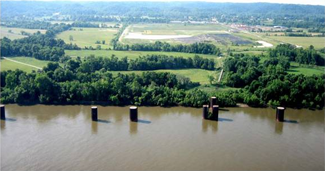
PROBLEM
The property owner wanted to determine what type of energy or coal gasification facility would be possible on this former industrial site in northeastern Kentucky.
SMG'S APPROACH
As part of the feasibility study for the facility, SMG designed a potential site layout for a CTL-CTG plant, illustrating the best use of the site in relation to production units, transportation and environmental impacts. SMG conducted an extensive geologic study to determine the potential for carbon sequestration beneath the site and in the area, both for permanent storage and enhanced oil recovery. We evaluated transportation issues related to receiving coal and other feedstock, including the potential for barge service, rail service and transportation by truck.
The site had been used as a barge terminal and a chemical facility. In planning the layout, SMG provided extensive research and a draft site management plan to address historic site contamination resulting from the prior use of the property.
RESULTS
Ongoing work includes development of a site specific permit map of required environmental permits, regulatory time frames, and the potential economic impact of permit requirements.
5/Market Testing
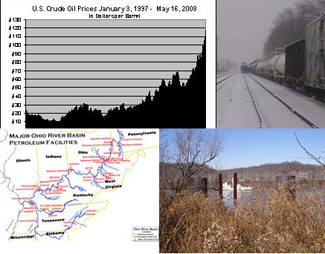
PROBLEM
Companies that want to develop synthetic fuels and chemicals must determine what products are marketable and economically viable. SMG was asked to determine what the market would be for the proposed products and which segments would be the most profitable.
SMG'S APPROACH
During 2008 and 2009, SMG helped two clients conduct a preliminary market analysis and assessment. First, the potential transportation modes for product to market were determined. Potential markets were identified within the target geographic area served by the likely transportation modes. Research to identify contacts within each target market was completed. Both publicly available information and market segment contacts were used to establish cost and pricing parameters for the products.
RESULTS
Considerably more was done to advance product market development than was originally planned. Not only were designated markets assessed and potential product pricing identified, but relationships were initiated between several promising buyers and suppliers.
6/Kentucky's Alternative Energy Project Site Bank
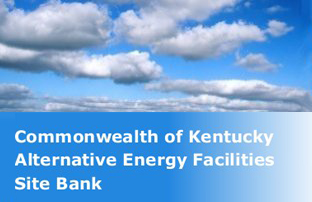
PROBLEM
Kentucky has focused on energy development as a critical piece of its economic well-being both now and in the future. As a state with a significant amount of the country’s coal, oil and gas resources, energy will continue to be a significant player in the future, as will the impact of carbon constraints. To encourage the development of alternative and state-of-the-art energy projects in Kentucky, the Department for Energy Development and Independence (DEDI) needed to identify potentially appropriate sites available for energy project development.
SMG'S APPROACH
SMG was asked by DEDI to develop appropriate criteria to evaluate sites for successful energy projects using wind, solar, biomass, nuclear and coal-to-liquids or coal-to-gas technology on a utility or industrial scale. Following substantial research of available studies and reports, SMG created criteria for each technology and applied a scoring and weighting scale to enable an objective review of nominated sites. Over a three year process, SMG has applied those criteria to 41 sites across Kentucky. The evaluation process included research, site visits and extensive work with the site owners or sponsors to gather the information needed to utilize the criteria.
RESULTS
The site sponsors and DEDI have new tools at their disposal in their efforts to promote the development of alternative energy projects in Kentucky. Through the evaluation process, certain sites have been identified as excellent locations for energy project development. Others have been determined to be good candidates for one technology or another. Some have aspects which limit their potential success. To assist in the marketing of energy development in Kentucky, SMG has created reports containing all relevant information for each site, including a discussion of the site’s assets for each type of technology. A one page fact sheet has also been created to be used as an additional marketing piece. A website which provides access to comprehensive information about each site has been developed to make the site selection process as streamlined as possible.
7/Preliminary Feasibility Studies
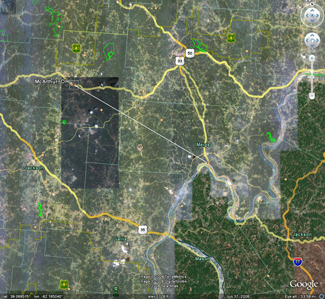
PROBLEM
How can you quickly assess a piece of property and determine its potential to support a 21st century energy project? A developer wanted to manufacture nitrogen compounds from the gasification of coal and biomass at a site in the Midwest. They knew they needed more than an environmental condition survey. They wanted to know quickly if the site could support the engineering, environmental and socioeconomic requirements for their project and what improvements might be needed to make their project work.
SMG'S APPROACH
SMG’s initial assessment found that the proposed facility did not have an adequate water supply to support the operation. The assessment also determined that the site would have to spend a considerable amount of money meeting the new homeland security standards. These problems jeopardized the project’s schedule and financial viability.
Smith Management Group leveraged their engineering group’s knowledge of the processes involved in the project along with their water resource expertise and promptly developed alternative site locations and alternatives for adequate water sources.
RESULTS
Smith Management Group’s efforts kept project costs within budget and the project on schedule. The improved site location and new project approach was welcomed by state and federal regulatory agencies. The new approach also reduced the number of environmental issues for the project which should help accelerate the permitting process and mitigate issues that may be a concern to environmental groups.
8/Waste To Ethanol
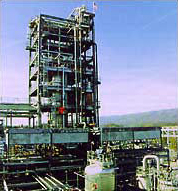
PROBLEM
An alternate fuels manufacturing company intended to construct and operate several solid waste to bio-ethanol facilities, and needed assistance in obtaining environmental permits.
SMG'S APPROACH
SMG evaluated the process components and developed a permit strategy for multiple sites in the region. SMG developed a template to obtain a permit for air emissions and water discharges from the site. The operations proposed on site include receipt of the solid waste, recovering materials that can be recycled, waste handling and preparation, gasification of the feedstock, and synthesizing methanol from the gases.
In addition to coordination with the air and water permitting agencies, and development of the template permits, SMG developed appropriate calculations of emissions, permit forms, attachments, and other pertinent information.
RESULTS
The receipt of these permits will allow the owner to install and operate this technology without permitting delays.
